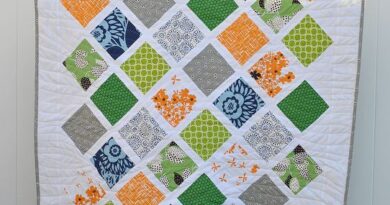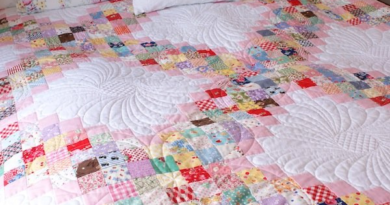Simple Quarter Log Cabin Quilt
Learn the basics of creating a beautiful and unique quilt using quarter log cabin techniques with our easy-to-follow guide! With just a few simple supplies and some basic quilting skills, you can create an impressive quarter log cabin quilt. This traditional quilting pattern is easy to sew and provides plenty of opportunity to make your project unique with various fabrics and colors. Follow this guide to find out how to get started on your own fantastic quarter log cabin quilt! Choosing the right batting is an important step in creating the perfect quilt.
There are several types of batting available, but for a quarter log cabin quilt, we recommend low loft batting for its superior strength and stability. When selecting batting for your project, make sure to also choose a high-quality thread that will work best with your chosen fabric and batting type. Low loft batting is a great choice for this type of quilt because it provides the stability and strength needed to hold up the log cabin blocks in place. It also produces traditional results with a soft texture, exceptional drape and warmth.
When considering other types of batting such as wool or bamboo avoid using them while piecing your project together; they have an inherent stretchiness that can distort the shape of your blocks. High-quality threads are also essential to achieve flawless results when sewing your quilt top. Choose thread that works best with your fabric – there’s cotton, polyester, and silk thread available on the market, each designed to perform better with certain fabrics. To start sewing your quilt, lay the batting on a flat surface and place the backing fabric over it.

Trim any excess fabric from the edges to make sure that it’s evenly distributed across the quilt top. Next, cover both with the pieced quilt top. To avoid wrinkling, baste one section of your project at a time using large stitches (7 to 10 stitches per inch). Afterward, switch to shorter stitches (11 to 12 per inch) when making final adjustments and remove all of your basting stitches. Quilting can be done by hand or machine. If you use a machine take time to stitch in the ditch since this technique helps you keep your blocks lined up nicely and adds definition to each block shape.
No matter what technique you choose, an important factor in the success of your quilt project is selecting the right batting. Choosing from different materials such as polyester, cotton or wool can affect how your quilt turns out. If you’re making a bed quilt or a large wall quilt then cotton or polyester batting is ideal. These types of batting are thick enough to help keep your blocks from shifting but also allow for easy maneuverability when sewing them together. If a lighter and thinner version is preferred, consider bamboo or wool batting since both are more breathable and lightweight than the others. When selecting the right batting for your project, think about how you plan to use it.
If the quilt is to be hung on a wall, then a stiffer and thicker batting would be ideal. This ensures the blocks will not stretch or warp from gravity over time. On the other hand, if the quilt is more of a decorative piece that will stay out of direct sun exposure, then a lighter material such as bamboo could easily suffice. Consider also taking into account any special ingredients in your fabric pick; some may already include weight or volume that need to be taken into account when choosing an appropriate batting for your project.




